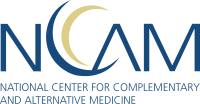
Photo from wikipedia
My service in Hong Kong in 2012 and again in 2013 on working groups that led to the World Health Organization (WHO) 2014–2023 Traditional Medicine Strategy reshaped my North American-centric… Click to show full abstract
My service in Hong Kong in 2012 and again in 2013 on working groups that led to the World Health Organization (WHO) 2014–2023 Traditional Medicine Strategy reshaped my North American-centric perspectives on integrative health and medicine. I gained basic understanding of how the WHO’s campaign for appropriate integration of traditional medicine ‘‘products, practices and practitioners’’ runs parallel in principles and desired ends with the North American and Eurocentric movement for integrative health and medicine. I learned how initiatives of the cashstrapped WHO typically require sponsorship, and how for the WHO Traditional Medicine Strategy, the Chinese government was the enabling force. The engine of the present global movement for appropriate integration of traditional medicine has been China. That primary awakening to the Chinese government’s role was much in mind on reading a December 6, 2016, media release from the Chinese news agency, Xinhua. The Chinese government released ‘‘Traditional Chinese Medicine in China’’ as its first white paper on Traditional Chinese Medicine (TCM). Seeded throughout the 10-page document are the data relative to TCM in China, which are compiled in Table 1. With this white paper, the Chinese government announced that they were beginning an era of greater respect for TCM in which these practices will have ‘‘equal’’ footing with Western medicine.
Journal Title: Journal of alternative and complementary medicine
Year Published: 2017
Link to full text (if available)
Share on Social Media: Sign Up to like & get
recommendations!